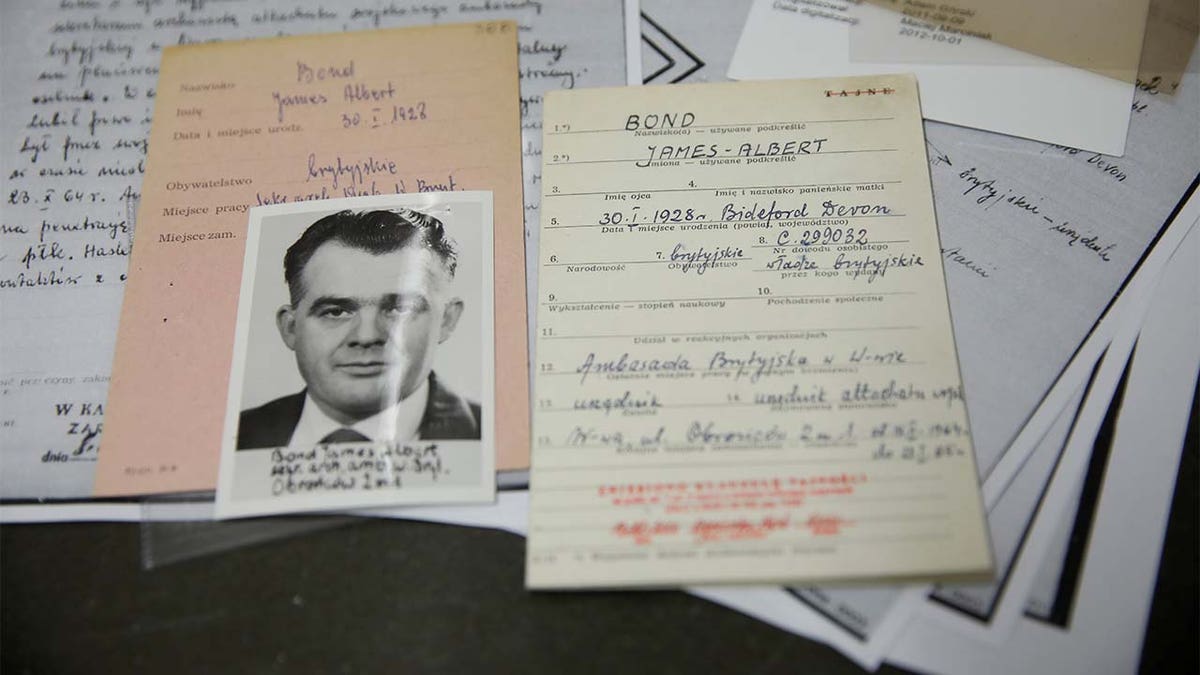Fox News Flash top headlines for Oct. 22
Fox News Flash top headlines are here. Check out what's clicking on Foxnews.com.
Recently declassified Cold War-era documents about a suspected British agent named James Bond have the Polish public and some in the intelligence community shaken, not stirred.
On Feb. 18, 1964, the agent named Bond, James Bond, arrived in Warsaw, then behind the Soviet Union's Iron Curtain, a barrier separating the Communist Eastern Bloc from the West.
Officially, he was employed as an archivist for the British Embassy Military Attache. But he soon earned the attention of Polish counter-intelligence officers. At one point, he was spotted snooping around a military base along the Soviet border, the Wall Street Journal reported.
He made several trips to northeast Poland allegedly to penetrate military installations, according to the Institute of National Remembrance, the Warsaw-based government agency that documents crimes against Poland.

The documents of a suspected British agent called James Bond are pictured at the Institute of National Remembrance in Warsaw, Poland. (Reuters)
The compromise of Bond's cover has resulted in debate among Polish historians and the public over whether Bond -- who went by Jim -- was in fact a spy.
“I mean, come on,” said Marzena Kruk, director of the institute, told Reuters. “He was a spy, doing spying things.”
The British Secret Intelligence Service, known as MI6, declined to comment to the newspaper.
Filip Hagenbeck, the former leader of Counterintelligence Branch Ten, the agency tasked with rooting out foreign spies, said a more likely scenario was that Bond was used as a decoy for more sensitive operations.
He suspects British intelligence knew a man with the same name as author Ian Fleming's popular fictional character would possibly distract Polish agents.

A photo of James Bond, a British Embassy employee who served in Poland in the 1960s. (Institute of National Remembrance)
“They were sending him to make him some kind of bait. To make counterintelligence chase him instead of other persons,” Hagenbeck told the Journal. “It was a game which was played, you know?”
Fleming began penning James Bond spy novels in the 1950s. The first Bond movie -- “Dr. No ” -- was released in 1962 with Agent 007 played by Sean Connery. To date, 26 Bond films have been released with seven actors in the title role.
Bond's widow, Janette Bond, 88, wasn't sure what her husband's mission was in Poland. She said she was told to join him in Warsaw to project a more credible cover story. Sometimes he communicated by writing on paper in their apartment because he feared upstairs neighbors were listening, she said.
She also recalled helping her husband evade his Soviet minders. He would turn up at parties, then slip away on a mission while she returned home with another British official.
“If it didn’t work, it was aborted,” she said.

A storage room full of files at the Institue of National Remembrance in Warsaw. (Institute of National Remembrance)
Bond returned to the United Kingdom less than a year after arriving in Poland. His family said he shared few similarities with Fleming's version, especially the womanizing.
“He wasn’t suave,” recalls his brother in-law Keith Tacchi. “Jim was an orders man, he joined the army and he played it by the book."
CLICK HERE TO GET THE FOX NEWS APP
Kruk disputed the assumption somewhat.
“He traveled a bit around Poland. ... He liked women, the same as his literary namesake, but there is not even a word about martini," she said. “However, there is information that he liked Polish beer.”


